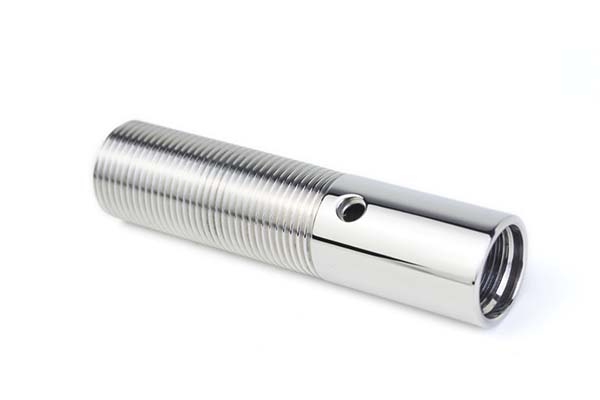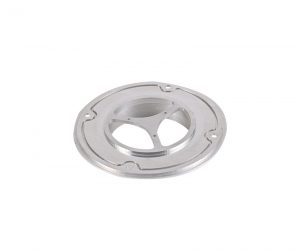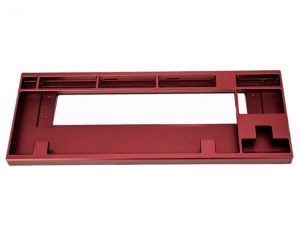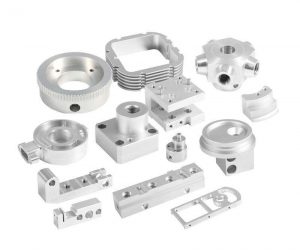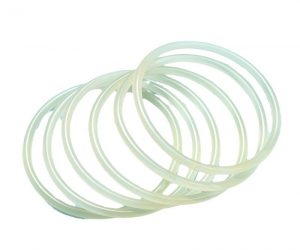Introduction
The Significance of Turning Factories
Turning factories play a pivotal role in the manufacturing industry, serving as the backbone for the production of a vast array of components. These factories are responsible for the creation of high - precision parts that are essential for countless products, from the smallest electronic devices to large - scale industrial machinery.
For instance, in the automotive industry, turning factories produce engine components such as crankshafts and camshafts. These parts need to be manufactured with extremely tight tolerances. A crankshaft, which converts the reciprocating motion of the pistons into rotational motion, must have a precision of within a few micrometers. If the dimensions deviate even slightly, it can lead to engine inefficiencies, increased wear and tear, and potentially engine failure. In 2022, the global automotive production reached over 85 million vehicles. Each vehicle contains numerous components produced by turning factories, highlighting the massive scale of their operations and importance in the automotive supply chain.
In the aerospace sector, the demand for precision is even more critical. Components like turbine blades for jet engines are produced in turning factories. These blades operate in extremely harsh environments, with high temperatures and rotational speeds. A single flaw in a turbine blade, which might be caused by imprecise manufacturing, could lead to a catastrophic failure during flight. According to the Aerospace Industries Association, the global aerospace market was valued at over $800 billion in 2023, and turning factories are an integral part of the complex supply chains that support this industry.
Moreover, turning factories are not just about precision; they are also about the efficient utilization of resources. They transform raw materials such as metal rods into finished components through a series of turning operations. This process involves removing excess material in a controlled manner to achieve the desired shape and dimensions. By doing so, they contribute to the overall efficiency of the manufacturing process, reducing waste and minimizing production costs. Given their far - reaching impact across multiple industries, understanding how success is achieved within turning factories becomes crucial. This article will delve into the various factors that contribute to success in the world of turning factories, aiming to provide valuable insights for industry professionals, investors, and those interested in the manufacturing sector.
Key Factors for Success in Turning Factories
Advanced Technology Adoption
State - of - the - Art Machinery
In modern turning factories, the adoption of state - of - the - art machinery is a game - changer. High - precision lathes, such as the DMG MORI NLX 2500, are equipped with advanced servo - motor - driven systems that enable them to achieve extremely tight tolerances, often within the range of ±0.001mm. This level of precision is crucial for manufacturing components that require high - accuracy, like aerospace engine parts.
Automated machining centers, for example, the Haas VF - 6YT, can perform multiple operations in a single setup. These machines are integrated with computer - numerical - control (CNC) technology, which allows for the precise control of cutting tools. They can automatically change tools, adjust cutting parameters, and perform complex machining operations. As a result, the production time for a batch of parts can be significantly reduced. In a traditional turning factory using older - model lathes, it might take 10 hours to produce a batch of 50 precision components. With a modern automated machining center, the same batch can be produced in just 3 hours, representing a more than 60% increase in efficiency.
Automation and Robotics
Automation and robotics have revolutionized the turning factory landscape. Robotic arms, such as those from Fanuc, are increasingly being used for tasks like loading and unloading workpieces. These robotic arms can operate 24/7 with high precision and repeatability. They can load a new workpiece onto the lathe and unload the finished part in a matter of seconds, eliminating the need for manual intervention during these time - consuming tasks.
In a turning factory that has introduced robotic automation, the production capacity has been observed to increase by 40% on average. Moreover, the use of robotics reduces the risk of human - error, leading to a significant improvement in product quality. For instance, a study in a large - scale turning factory showed that after the implementation of robotic arms for material handling, the defect rate of the final products decreased from 5% to 1%. This not only saves costs associated with rework and scrap but also enhances the factory's reputation for producing high - quality components.
Skilled Workforce
Training and Development Programs
A skilled workforce is the backbone of a successful turning factory. Many leading turning factories invest heavily in training and development programs for their employees. For example, some factories provide their workers with an average of 40 hours of training per year. These training programs cover a wide range of topics, including advanced machining techniques, programming of CNC machines, and the use of new software for design and simulation.
They also offer courses on emerging technologies such as additive manufacturing, which is becoming increasingly relevant in the manufacturing industry. The number of courses offered can be as high as 20 different specialized courses per year. By participating in these programs, employees can enhance their skills and knowledge, which in turn leads to increased innovation within the factory. A case study in a turning factory found that after implementing an extensive training program, the number of process improvements proposed by employees increased by 35% over a period of one year.
Attracting and Retaining Talent
To attract and retain top talent, turning factories need to offer competitive salary packages, which are often 10 - 15% higher than the industry average for skilled workers. They also provide comprehensive benefits such as health insurance, retirement plans, and paid vacation. In addition, offering career development opportunities, such as internal promotion programs and opportunities to work on high - profile projects, is crucial.
A stable workforce is essential for the long - term success of a turning factory. When employees stay with the company for an extended period, they accumulate in - depth knowledge about the factory's processes, equipment, and products. This knowledge transfer within the workforce helps to maintain high - quality production, improve efficiency, and reduce the cost associated with employee turnover. For example, a factory that has a low employee turnover rate of 5% per year can expect to have more consistent product quality and fewer disruptions in the production process compared to a factory with a high turnover rate of 20% per year.
Quality Control
Stringent Inspection Processes
Quality control is a non - negotiable aspect of a successful turning factory. Factories typically have multiple inspection points throughout the production process. At the raw material stage, they use techniques like spectrometers to analyze the chemical composition of metals, ensuring that they meet the required standards. For example, in the production of stainless - steel components, the spectrometer can precisely measure the percentage of chromium, nickel, and other elements in the raw material.
During the production process, in - line inspection systems, such as laser - based measurement devices, are used to monitor the dimensions of the workpiece in real - time. These devices can detect any deviation from the specified tolerances immediately, allowing for prompt adjustments to the machining process. At the final product stage, a comprehensive inspection is carried out, including functional tests and dimensional checks. By maintaining such strict inspection processes, factories can ensure that the products leaving their facilities are of the highest quality. This, in turn, helps to build a strong reputation in the market and gain the trust of customers. A factory that has a low product defect rate of 2% due to its stringent quality control measures is likely to attract more high - value contracts compared to a factory with a defect rate of 10%.
Continuous Improvement in Quality Standards
Successful turning factories are constantly striving to improve their quality standards. For example, a factory that manufactures components for the medical device industry may start with a quality standard of 99% defect - free products. However, over time, through continuous improvement initiatives, they may aim to increase this to 99.9% or even higher.
This could involve investing in new inspection technologies, such as high - resolution 3D scanners for more accurate dimensional measurements, or implementing advanced statistical process control (SPC) techniques to better analyze and control the production process. By continuously raising the bar for quality, these factories can stay ahead of the competition, meet the evolving demands of customers, and drive innovation within their operations.
Yigu Technology's Perspective
As a non - standard plastic metal custom products Supplier, Yigu Technology has a unique perspective on the success factors within turning factories.
In the realm of non - standard plastic and metal products, technology integration is more complex yet equally crucial. While standard turning factories can rely on pre - set programs for mass - produced components, non - standard production requires a high degree of flexibility in technology application. Yigu Technology believes that having a diverse set of advanced machinery, such as multi - axis CNC lathes, is essential. These machines can handle the complex geometries often required in non - standard parts. For example, when producing a custom - designed plastic connector with intricate internal channels for a specific electronic device, a multi - axis lathe can precisely carve out these channels in a single operation, reducing the need for multiple setups and thus saving time and cost.
Automation also plays a significant role, but it needs to be adaptable. Yigu Technology advocates for the use of flexible automation systems. These systems can be reprogrammed quickly to handle different non - standard product requirements. For instance, a robotic arm used for loading and unloading workpieces can be easily adjusted to handle parts of various shapes and sizes. This adaptability ensures that the production process remains efficient even when dealing with a wide range of non - standard orders.
FAQ
Q1: How important is advanced technology in a turning factory?
A: Advanced technology, such as state - of - the - art machinery and automation, is extremely important. It can increase production efficiency by up to 60% in some cases, improve product precision to within ±0.001mm, and reduce the defect rate from 5% to 1% when robotics are introduced for material handling.
Q2: Why is a skilled workforce crucial for a turning factory?
A: A skilled workforce is the backbone of a turning factory. Through training programs, employees can enhance their skills, leading to a 35% increase in process improvement proposals. A stable workforce with low turnover (e.g., 5% per year) helps maintain high - quality production, reduce disruptions, and save on employee turnover costs.
Q3: What role does quality control play in a turning factory?
A: Quality control is non - negotiable. Stringent inspection processes, from raw material to final product, can ensure a low defect rate, such as 2% compared to 10% in factories with less strict controls. Continuous improvement in quality standards helps factories stay competitive, meet customer demands, and drive innovation.
